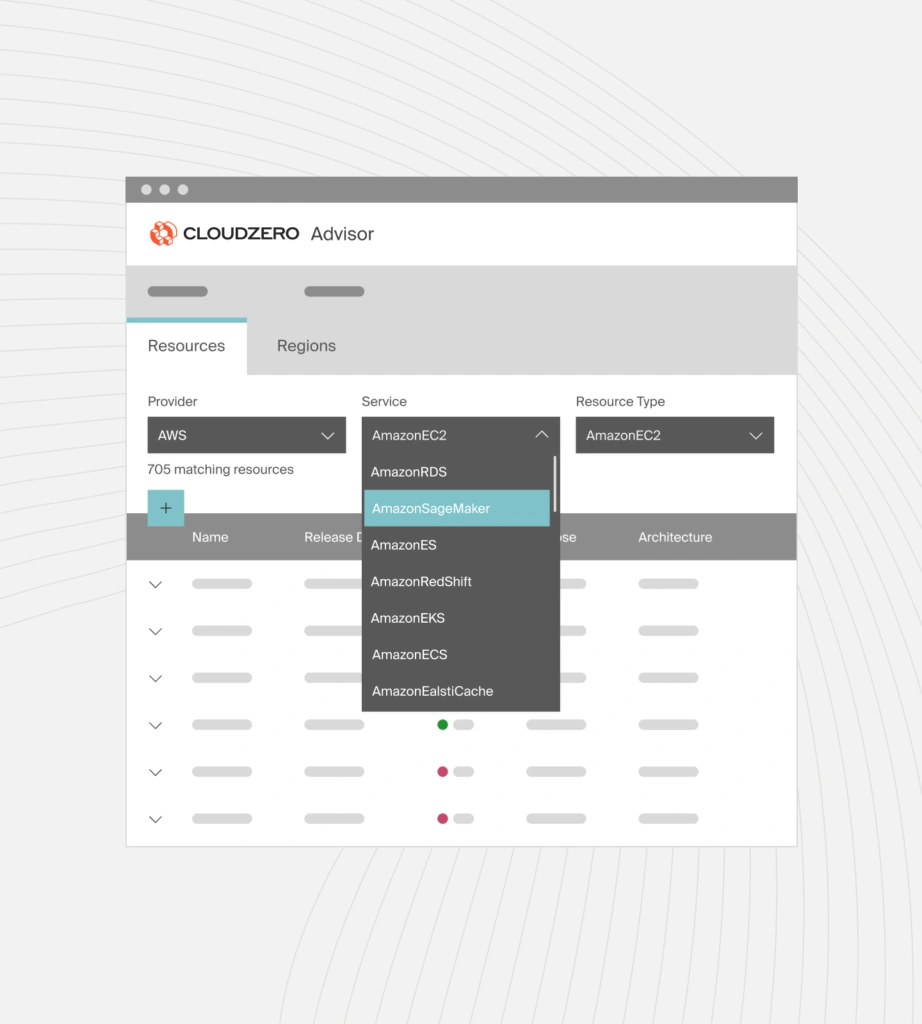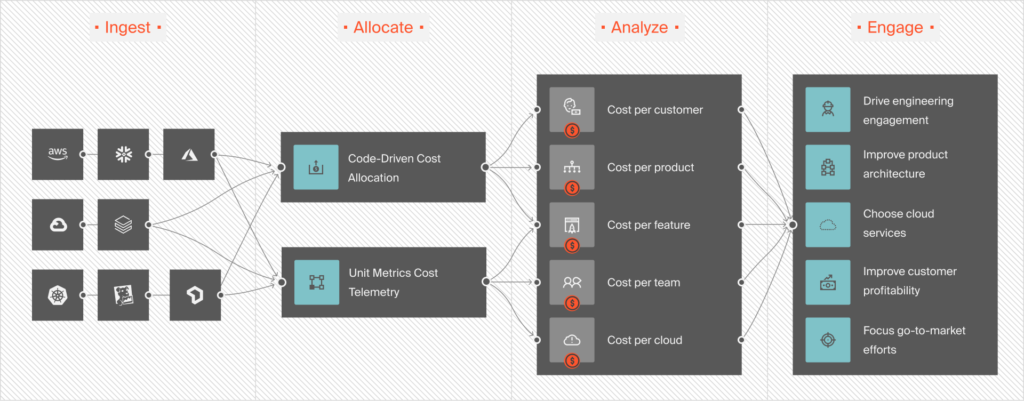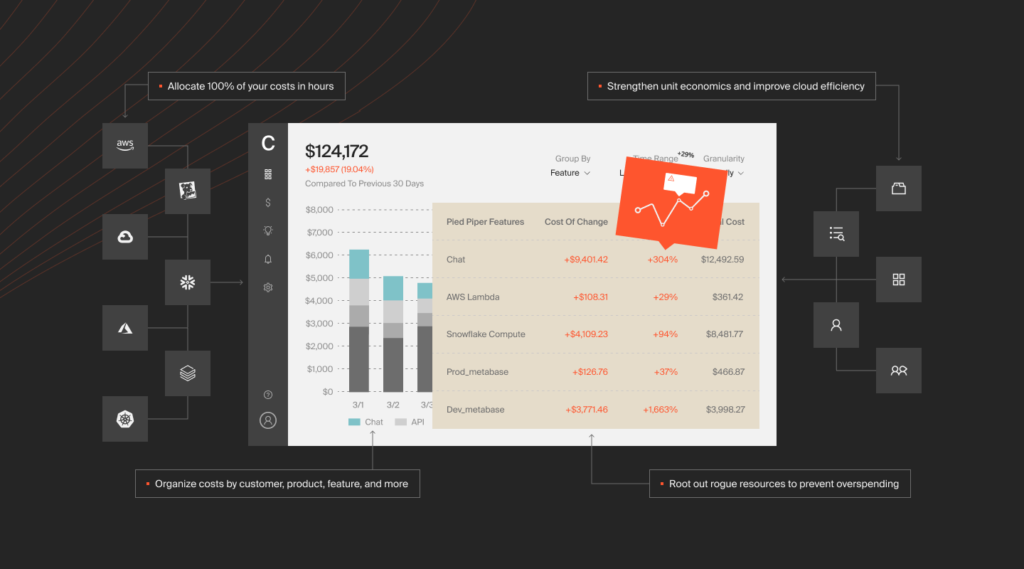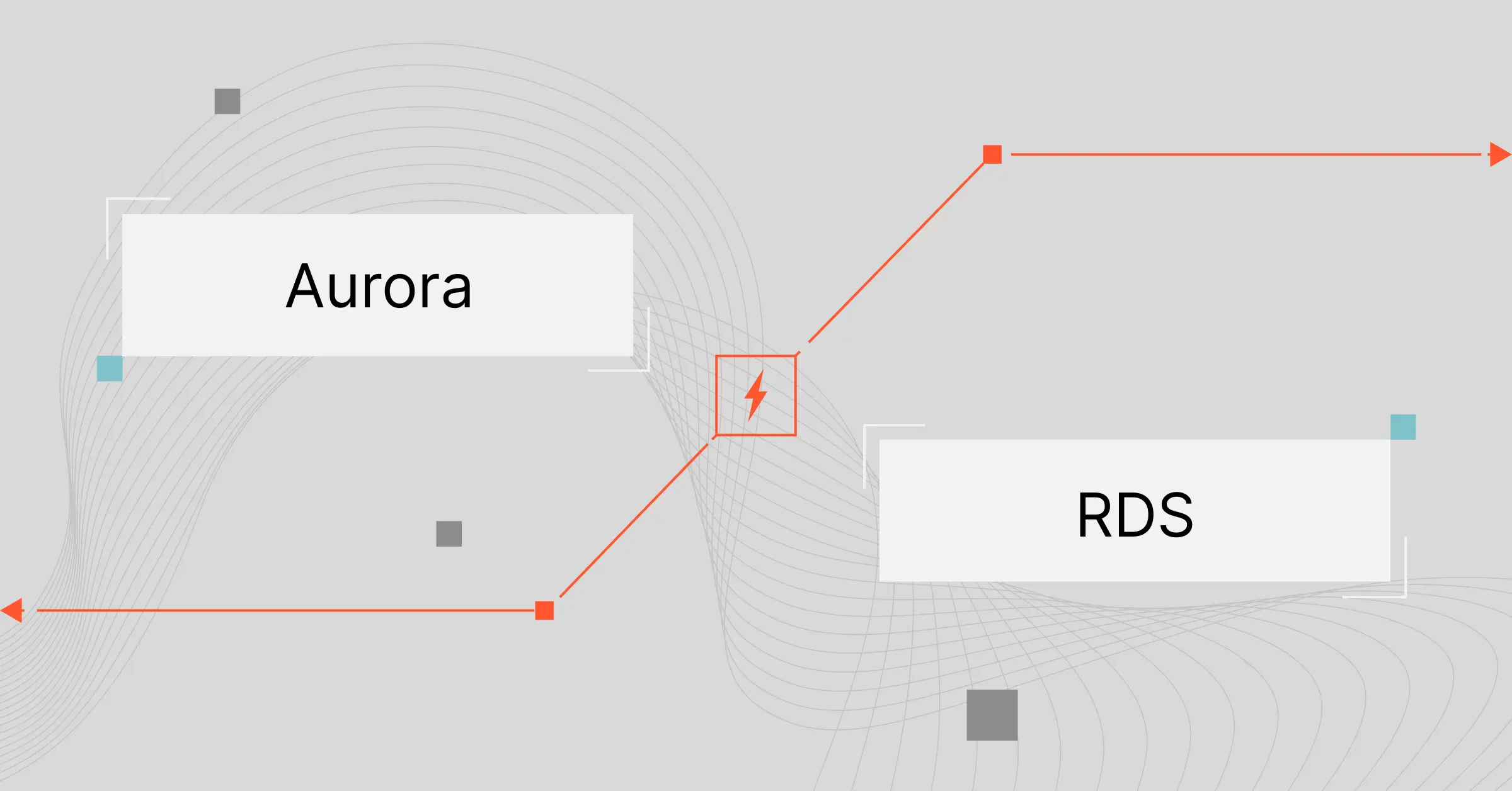There are several high-performing database services available on Amazon Web Services (AWS). When you need to handle caching, Online Transaction Processing (OLTP), real-time data, session stores, or personalization, you can choose one of these options.
What Is Amazon RDS?
Amazon Relational Database Service provides a high-performance, highly scalable, and fully managed way to set up, run, and optimize your relational databases (tables, rows, and columns) in the AWS cloud.
Because it is a Database-as-a-Service (DBaaS), Amazon RDS enables you to do this without needing to configure your own physical infrastructure or maintain software to use a web-based database.
Another thing. Amazon RDS enables you to choose, deploy, and scale any of the up to seven relational database engines of your choice:
- Amazon Aurora (either Aurora MySQL Compatibility or PostgreSQL Compatibility)
- MySQL
- MariaDB
- PostgreSQL
- Oracle
- Microsoft SQL Server
- Amazon RDS on AWS OutPosts (for on-premises deployments)
The Amazon RDS database service offers a variety of benefits, including:
- Full management – Amazon RDS takes care of all the database administration tasks, such as provisioning, patching, and backups. This frees up your time so you can focus on other key areas of your business.
- Multiple DB engines – Deploy your databases almost anywhere since RDS supports seven common database engines (DB software).
- High availability and durability – Amazon RDS is highly available and durable, with automatic failover and backups. This means that your data is always available, even in the event of a failure.
- Easier data migrations – Through tools such as the Database Migration Service, RDS simplifies and accelerates moving your existing DB data to the cloud.
- High Scalability – Amazon RDS is scalable, so you can easily add or remove capacity as needed. This makes it easy to grow your database as your business grows.
- Data Security – Amazon RDS is secure, with encryption and access control features. This helps to protect your data from unauthorized access.
- Automated data backups – Makes regular backups of your data, including Point-in-Time backups to ensure you can recover your data in the event of a loss.
- Cost-effectiveness – Amazon RDS is cost-effective, compared to similar commercial alternatives. It also supports pay-as-you-go pricing, meaning that you only pay for the resources you use.
You can also connect to the RDS endpoint with Amazon RDS Custom if you need to customize the database and operating system. Amazon RDS Custom for Oracle and RDS Custom for SQL Server are available.
Overall, RDS is a great option for businesses that need a reliable, scalable, and cost-effective database solution.
What Is Amazon Aurora?
Amazon Aurora is one of RDS’s database engines. But Aurora is designed as a cloud-native, high-performance, highly scalable database service that is MySQL- and PostgreSQL-compatible.
AWS designed Amazon Aurora to deliver up to 3X read replicas (15 in total) compared to standard RDS, 5X the throughput of MySQL, and 3X that of PostgreSQL databases.
Here are more Amazon Aurora benefits you’ll certainly want to know:
- Fully managed – AWS Aurora is a fully managed relational database service that is designed to provide higher performance and scalability than traditional RDS databases. The tool frees you from all the tedious tasks, including provisioning, patching, and optimizing.
- Faster – In some cases, Aurora delivers up to three times the throughput of PostgreSQL and up to 5X that of MySQL without modifying most of your existing applications. Aurora is a great choice for applications that require scalability and performance.
- More durable – It supports multiple Availability Zones for data backups and replication. Amazon Aurora is an ideal choice for applications that require high availability and low latency. It can also handle high workloads and has built-in failover capabilities.
- Serverless – This design enables you to use only the resources you need and for as long as you need them, on-demand.
- Even better scalability – Aurora is highly scalable, and can be scaled up or down to meet the needs of your existing applications, faster than standard RDS.
- Availability – Aurora is designed to be highly available, with a 99.999% uptime SLA.
- Security – Aurora is designed to be highly secure, with encryption and auditing features.
- Cost-effectiveness – Aurora is a cost-effective database solution, with pricing that is based on usage.
Amazon Aurora is designed to be more scalable and performant than traditional MySQL and PostgreSQL databases.
Overall, Amazon Aurora is a great choice for businesses that need a cloud-native, high-performance, and on-demand database solution.
You may begin to see why Aurora is often the preferred choice for many DBAs when it comes to AWS database services. But not so fast.
Here’s a breakdown of the key differences between RDS and Aurora that make all the difference. Then you can decide which AWS DB service to choose for your requirements.
What Are The Differences Between Aurora And RDS?
RDS and Aurora differ in several key areas, from architectural design to performance to how the data storage and replication happens. We’ll compare these different areas below:
1. Amazon Aurora vs. RDS: Architecture
Amazon Aurora’s cloud-native architecture separates compute from storage. Aurora stores data in a shared cluster volume. This cluster is distributed across six storage nodes and three AWS Availability Zones.
Not only does this deliver Multi-AZ resilience, but Aurora also automatically grows or shrinks your volume to match your data storage needs, up to 128TiB. In comparison, RDS offers up to 64TiB for MySQL, MariaDB, Oracle, and PostgreSQL engines or 16 TiB for SQL Server engine. Plus, you don’t need to provision the storage yourself, which saves you time and effort.
Pricing also increases or decreases to match your data. Aurora uses the “pay for what you use” model as Amazon S3.
The compute nodes handle queries and connect to the shared cluster volume. You do have the same primary/replica split. However, replication occurs entirely within the storage nodes. That means no synchronous replication happens between compute nodes. The nodes do not hold any permanent state either.
In RDS, each node is responsible for both compute and storage. And, compared to Aurora, which is built from scratch for the cloud, RDS is designed more like a traditional database solution that works in the cloud.
However, Amazon RDS automates the process of provisioning, deploying, and managing a database directly on Amazon EC2 instances. A few clicks in and you have a ready database to store your data on the AWS cloud.
That design enables you to work with up to five other DB engines; MySQL, PostgreSQL, MariaDB, Oracle, and Microsoft’s SQL Server. You can also use RDS on-premises with Amazon RDS on AWS OutPosts, using the Database Migration Service to move your data to the AWS cloud.
In comparison, Aurora is limited to just MySQL- and PostgreSQL-compatibility.
2. Amazon RDS vs. Aurora: Performance and scalability
Amazon RDS is high-performing and supports DB scalability up to 32 vCPUs and 244 GiBs of memory. Learn more about Amazon RDS instance types here.
Aurora provides virtually unlimited scalability, expanding in increments of 10 GB to maintain optimal performance.
Also, compute and storage aren’t separate in RDS – as in Aurora. New RDS replicas have to copy all existing data before they can serve requests.
Plus, new replicas lead to more replica traffic, which can hamper your throughput rate. As a result, RDS limits you to 5 replicas to keep the replication under control.
However, the service offers SSD-backed storage and dedicated hardware to enhance performance. Also, RDS lets you choose between Provisioned IOPS storage and General-Purpose storage to ensure consistent IOPS performance.
Moreover, RDS on Amazon EC2 enables you to scale CPU, memory, IOPS, and storage independently. When you buy RDS on AWS OutPosts for on-premises use, all these will work as a bundle, not independently.
In terms of DB instance classes, RDS supports more of those than Aurora does; Standard, Memory-Optimized, and Burstable for RDS vs. Memory-Optimized and Burstable for Aurora.
Yet, with Amazon Aurora Serverless, you can automatically increase or decrease your compute node capacity to match your data processing requirements.
Your data storage is not affected by the scaling as it remains in the shared cluster volume. This shared volume eliminates the delay caused by needing to copy all existing data in new replicas, as in RDS. Nodes just “tap” into the shared cluster, speeding replication.
Amazon Aurora’s separate compute and storage architecture, along with support for on-demand scaling (serverless feature), enables Aurora to be faster, more durable, and quicker to recover from failure than standard Amazon RDS.
3. Amazon Aurora vs. RDS: Data backups and replication
Aurora supports up to 15 replicas compared to just 5 for RDS. All Aurora replicas and the primary instance share the same volume, which supports millisecond replications. This is because the replicas automatically access the data or upgrades hosted in the shared volume — unlike on, say, RDS MySQL where it must be copied to each instance before any can serve requests.
Failovers are automatic here, and Aurora ensures no data loss. You can also set your replica failover priority. In addition, Amazon Aurora supports Multi-AZ backups, which are faster than on RDS.
RDS on Amazon EC2 lets you run a DB instance in different AZs (Multi-AZ resilience) within the same AWS Region. The service synchronously replicates your primary DB’s data to all the standby EC2 instances across all the Availability Zones. The secondary DBs in a Multi-AZ setup can serve read traffic.
However, setting up failover in RDS is a manual process. But RDS will automatically replace a failed compute node after that.
4. Amazon RDS vs. Aurora: Availability and durability
The automated backups in RDS and Aurora support Point-in-Time recovery for database instances.
You can use RDS to create backups of your instances, which are then saved in Amazon S3. These backups are user-initiated. RDS keeps the snapshots until you explicitly delete them.
On Aurora, the Point-in-Time feature enables you to restore your data at any second during the retention period (35 days). You can also recover data up to the last five minutes.
Besides, you can backtrack to your original database state without restoring your data from a backup. Aurora continuously scans your disks and data blocks to detect any errors and promptly replaces them.
5. Amazon Aurora vs. RDS: Security, authentication, and encryption
Security on Amazon Aurora and RDS is similar to an extent. Both let you control who can log in to your database on a DB instance. The specific method you can use to manage access to your RDS or Aurora database depends on what task you want to perform.
Still, you can manage network access control by using Amazon VPC to run your DB instance within a virtual private cloud.
You can also use AWS Identity and Access Management policies to assign permissions (IAM database authentication). The IAM policies specify who can manage your RDS or Aurora resources.
With security groups, you can control what EC2 instance or IP address can connect to your DB on a DB instance. Any access attempt not authorized by the associated security group’s policies is not allowed.
You can also use Transport Layer Security (TLS) or Secure Socket Layer (SSL) connections for DB instances running MySQL, PostgreSQL, MariaDB, Oracle, and Microsoft’s SQL Server DB engines.
Amazon Aurora also supports Kerberos authentication, enabling you to authenticate users connecting to your Aurora MySQL DB and PostgreSQL clusters.
Amazon RDS further secures your data by encrypting DB instances and snapshots at rest.
6.) Aurora vs. RDS: Monitoring Capabilities
When it comes to this factor, AWS Aurora offers more granular monitoring capabilities which include real-time metrics regarding CPU usage, memory utilization, disk space, and I/O activity.
All of these can be integrated with Amazon Cloudwatch which then gives you the ability to set alarms if certain metrics cross a predetermined threshold.
It also offers advanced logging capabilities which include general logs, slow query logs, error logs, and audit logs which effectively help in identifying and debugging issues more effectively.
AWS RDS does also integrate with Amazon Cloudwatch and offer a look into similar look into metrics that Aurora tracks (such as CPU utilization and free storage space), just on a less granular scale.
RDS does also offer logging capabilities such as error logs and audit logs. These are adequate for most use cases but may not be enough for enterprise level businesses with a greater need for advanced monitoring.
7. Amazon RDS vs. Aurora: Pricing
Amazon RDS pricing is based on usage. However, RDS billing is based on several factors including, DB engine, DB instance type, DB region, purchase option (Reserved or On-Demand), outbound data transfers, deployment type, and whether you need additional storage.
You can use the RDS pricing factors to calculate your costs in advance. This is not always possible when using Aurora, especially the serverless mode.
We’ve compiled a detailed guide to Amazon RDS pricing here. Check it out to learn how to accurately calculate your RDS bill.
Amazon Aurora pricing is based on pay-as-you-go, Reserved Instance, or On-Demand pricing.
The way Amazon Aurora billing works is dependent on the cluster configuration and includes charges for DB instance, I/O, and storage. Any optional features that you decide to activate will also be factored into the billing.
Should You Choose Amazon RDS Or Aurora And Why?
Your choice between Amazon RDS and Aurora will depend on your specific needs. Here’s a summary of Aurora vs. RDS advantages and limitations, based on what we’ve learned in this guide, to help you pick the best AWS DB service.
Pros and Cons of Amazon RDS
Amazon RDS advantages include:
- RDS supports up to seven DB engines; Aurora, MySQL, PostgreSQL, Microsoft SQL Server, MariaDB, Oracle, and RDS on Amazon OutPosts.
- As an overlay technology, RDS works seamlessly with most database solutions, ensuring minimal changes to your existing applications.
- It is a fully managed database solution, enabling you to deploy databases in the AWS cloud in a few clicks.
- RDS on Amazon EC2 hands you a lot of control of the underlying instances, including choosing instance types and sizes, so you can customize your DB performance to your requirements.
- RDS retains your transaction logs and backups/recovery data for a period you specify.
Amazon RDS also delivers high availability, scalability, and resilience across multiple Availability Zones. It is also ideal for long-running database jobs.
Amazon RDS limitations include:
- In RDS, each new node must copy the entire existing data before it can serve requests, which means that RDS can be slower than Aurora, which minimizes latency to milliseconds.
- RDS limits replications to just five compared to 15 for Aurora.
- Database scalability is limited. RDS does not support sharding.
- Multi-AZ deployments cost extra if you want to improve your data’s resilience.
Here’s how Amazon Aurora’s advantages and drawbacks compare to standard RDS.
Pros and Cons of Amazon Aurora
Amazon Aurora advantages include:
- Offers up to 5X better performance than conventional MySQL databases and up to 3X better than PostgreSQL DBs.
- Aurora delivers up to 3X read replicas than Amazon RDS.
- The service delivers low-latency read replicas across multiple Availability Zones in an AWS Region.
- Amazon Aurora delivers outstanding automated backups and supports data recoveries up to the last five minutes.
- The Aurora architecture makes it faster, more durable, and cloud-native than RDS on Amazon EC2.
- Aurora Serverless is highly performant and cost-effective for unpredictable database workloads.
Yet, Aurora is not perfect.
Amazon Aurora limitations include:
- It is compatible with just two DB engines (MySQL and PostgreSQL) compared to seven on RDS on Amazon EC2.
- Aurora is limited to the InnoDB storage engine.
- While Amazon RDS enables you to try it out for a year on the AWS Free Tier, there’s no such offer for Aurora.
- It’s tough to predict Amazon Aurora Serverless costs in advance.
And speaking of Amazon RDS costs…
How To Collect, Understand, And Control Your Amazon RDS Costs The Easier Way
Setting up, monitoring, and optimizing RDS on Amazon EC2 instances can be challenging. It can be even more challenging to capture, understand, and control your Amazon RDS costs manually.
CloudZero can help you in two ways:
Use CloudZero Advisor to choose the best instances for your database performance requirements
CloudZero Advisor empowers you to select just the right instances for the DB job based on your workload, AWS service, region, budget, and more. You can compare prices and get advice on how to optimize your Amazon RDS on EC2 deployment. Picture this:

Understand, control, and optimize your per-unit Amazon RDS and Aurora costs in one place
Most cost tools will only show you what your total and average costs are — not precisely how much you spent on Amazon RDS on EC2 vs. Aurora costs — or the other different AWS DB services.
With CloudZero you can understand your database costs down to cost per individual customer, per feature, per service, per environment, per project, per team, and more. This means you can understand exactly where your Amazon RDS budget is going, and actually be able to do something about it.

You can choose to go even deeper, using metrics such as cost per customer per feature. Check this out:

You don’t need to have perfect cost allocation tags to get this immediately actionable cost intelligence.
Ultimately, CloudZero will help you avoid RDS cost overruns by sending you timely, noise-free, and contextual cost anomaly alerts via Slack and email.
Companies like Drift and Demandbase have used CloudZero to save over $3 million and reduce their annual AWS costs by 37%. You can, too.
 to personalize it to your environment and experience CloudZero for yourself.
to personalize it to your environment and experience CloudZero for yourself.
AWS Database Services FAQs
Here are answers to your most frequently asked questions about Amazon Aurora vs. Amazon RDS.
What is the main difference between Aurora and RDS AWS databases?
Amazon Aurora is built from scratch as a fully managed, cloud-native relational database service on AWS. And while Aurora is a proprietary AWS service, it works with open-source database solutions.
Meanwhile, Amazon RDS is the overlay technology that simplifies the process of configuring, managing, and optimizing your relational MySQL, PostgreSQL, SQL Server, MariaDB, Oracle, and Aurora databases.
What is the fastest AWS database service?
While all AWS database services are high-performing and reliable, Amazon Aurora is designed to deliver microsecond latency, scaling, and recoveries, complete with in-memory caching.
Why use Amazon Aurora over Amazon RDS?
Amazon Aurora is faster, more durable, and more efficient, especially for short-term, unpredictable database workloads.
Why use Amazon RDS over Amazon Aurora?
Amazon RDS on EC2 offers superior customization options, cost-efficiency for long-running database workloads, and supports multiple database engines.








